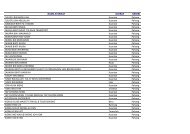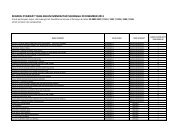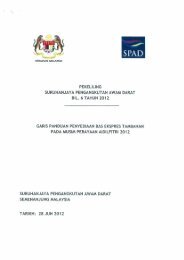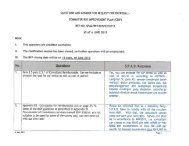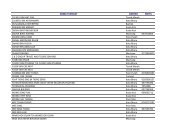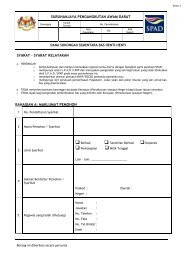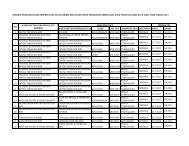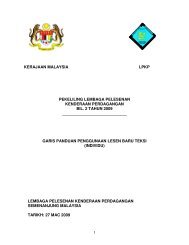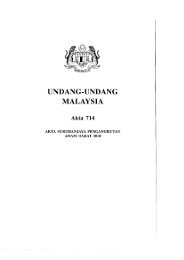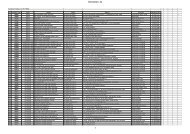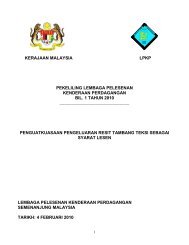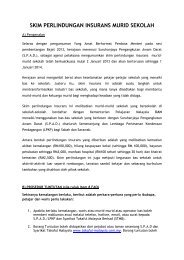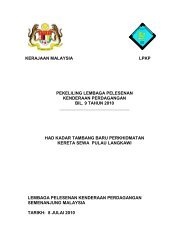Contents - SPAD
Contents - SPAD
Contents - SPAD
Create successful ePaper yourself
Turn your PDF publications into a flip-book with our unique Google optimized e-Paper software.
Improve - upgrade operations and infrastructure to appropriate standards<br />
Attract - provide investment in the corridors through new capacity (for example new rail lines)<br />
and infrastructure<br />
Push - define complementary policy measures through land use and travel demand<br />
management allow the LPT modal share to achieve the targets<br />
The Regional LPTMP is then an assembly of the policy instruments, proposals and transformation plans<br />
for LPT in a region. Key to the success of the LPTMP is the dire need for integration of LPT modes and<br />
the assessment of benefits. Often LPT is only one part of the passenger journey. Integration with other<br />
modes (LPT, private transport, walking and cycling) is important to maximise the potential usage of<br />
LPT. This can be referred to as the „first and last mile‟.<br />
The Bus Transformation Plan (BTP) is to set the basis for the development and integration of bus<br />
services in the GKL/KV region. Its purpose is to define the standards that should be adopted in<br />
developing the bus network and to identify the regulatory framework to be adopted for procuring and<br />
licensing operators and bus services in the region that will deliver the vision and proposed service<br />
standards. At this stage of the process, it is not for the LPTMP to set the longer term detailed network<br />
as this will evolve as land use patterns change and as other infrastructure and services are introduced,<br />
particularly new and expanded rail services. Thus the LPTMP defines not only short and medium term<br />
proposals but also the process through which longer term developments will be achieved.<br />
In developing the BTP it is recognised that an analysis of existing conditions was undertaken as part of<br />
the NKRA Urban Public Transport Lab (Pemandu, reported in December 2009). A series of short term<br />
initiatives were identified as part of the NKRA with implementation between 2010 and 2012. The<br />
NKRA initiatives related to bus included:<br />
<br />
<br />
<br />
<br />
Implementing dedicated bus right-of-ways: Bus Expressway Transit (BET), Bus Rapid Transit<br />
(BRT) and Bus Lanes<br />
Increasing coverage and quality of bus stops<br />
Enforcing traffic and operator service standards<br />
Improving and reorganising the bus network<br />
In addition, other initiatives which also impact upon bus include:<br />
<br />
<br />
<br />
<br />
The programme of relocated and improved transport terminals to relief city centre congestion<br />
Establishing a single, better integrated ticketing platform across all operators<br />
Improving station integration facilities for intra-modal and inter-modal transfers<br />
Establishing and monitoring LPT operator performance standards<br />
The BTP seeks to build on these initiatives, adding new elements to allow the roll out of a transformed<br />
bus industry across the GKL/KV region.<br />
1.6) Structure of the Bus Transformation Plan Document<br />
This document provides a summary of the BTP for the GKL/KV region. The next chapter (Chapter 2)<br />
outlines the current conditions in the region, particularly with respect to bus. Chapter 3 looks at the<br />
Page 6



